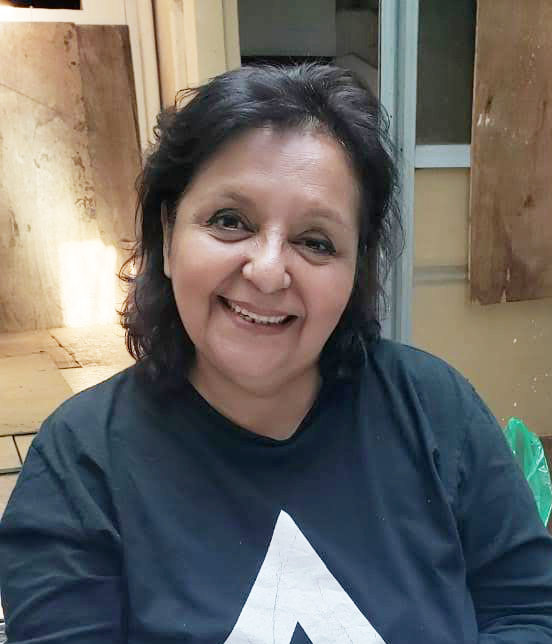
When dancing became a struggle
For decades, I have dedicated myself out of desire, love, and conviction to spread Andean dances. I started with Peruvian dances when I met some teachers from Peru and northern Argentina during the final years of the dictatorship. I am from the North; my family is from Catamarca, and we are Diaguita. When I came to Buenos Aires, I found that the urban culture and the aspects of Creole folklore didn’t have the same impact on me as the sound of a quena or a sicu did. I’m unsure why, perhaps because my grandmother passed it down to me without realizing it. One day, I asked myself what I still had pending and I said dancing. That’s when all of this began; I started to dance and haven’t stopped for thirty-three years.
I had chosen social work as my profession, bringing me into contact with many migrants. I began to dance Bolivian folklore, delving into everything related to migrants despite the challenges of dancing a Bolivian dance that was often discredited and misunderstood in this society with a small and marginalized group of people. So, I managed to provide support to these individuals. Dancing became a migrant struggle, fighting for the rights and improving the social and labor conditions of migrants. That is how I combined my profession with dance. .
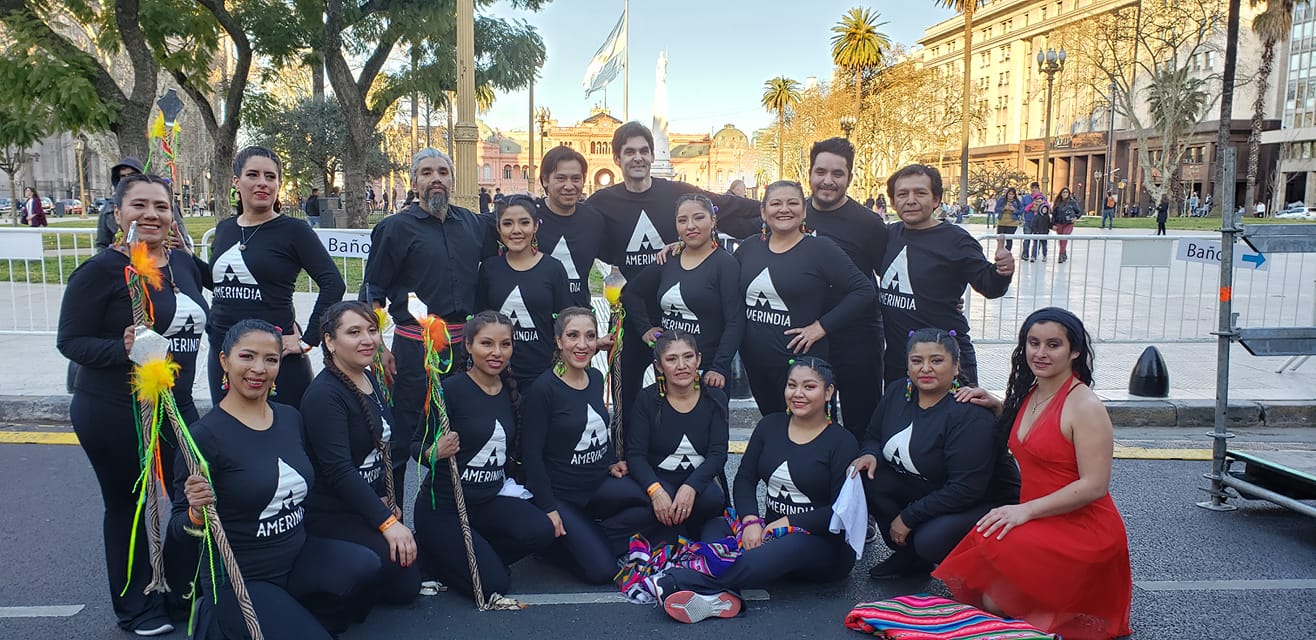
I learned from many teachers and traveled extensively to Bolivia, getting to know even the smallest communities along the Andean range. And that’s how the Amerindia Cultural Center was formed. It’s a place of social support, where there’s a search for identity, for preserving each person’s identity, the values of humanity, and our great America. Because we need to be united, it’s not just a slogan or a political flag; it’s the need to complete ourselves.
I call myself a teacher, a dancer, and a choreographer. I say I am “Liliana from Amerindia,” meaning I am everywhere. My greatest desire is to pass on what we have learned. There is no great ambition; we are not the best or the only ones. Many people think that Argentinians are different in dance and Andean cultures, but that’s not true; we are not that different. I would name myself as my group does, not so much as Liliana; Liliana is a worker for this group, for Amerindia. That’s what I am: an artist dedicated to the group I belong to, which is Amerindia. That’s what I am; that’s undoubtedly what I am.
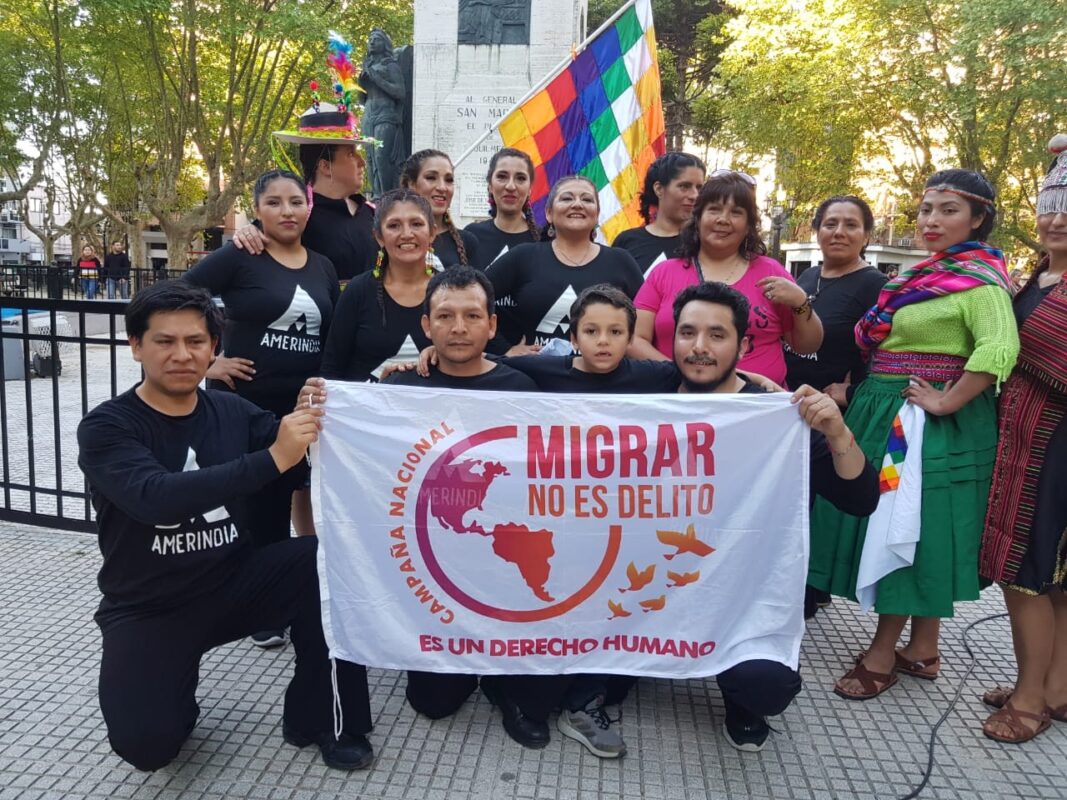
Sharing a ritual with another person
In Amerindia, my role as a dance teacher focuses on the indigenous dance aspect that is still not fully understood. Transmitting an identity through dance is complex; it requires careful consideration because we work with mixed, indigenous, and Creole dances. Our primary goal has always been to support communities deep within the land. And that’s only possible with some transformation. Just performing on an urban stage is a transformation in itself. Most of our dances have a ritual character devoted to Pacha, the Sun, and Wayra. Everything is interconnected, so we don’t approach it from a romantic standpoint. When someone comes to our cultural center, they dance as they can, gradually learning different techniques.
We teach and offer workshops open to everyone. Currently, we have more older participants than young ones, and that’s comforting to me because some people have waited until they were in their 40s, 50s, or 60s to indulge in indigenous dances. It’s a different kind of relationship, not focused on personal glamour. A dancer’s primary desire is often to be praised and look beautiful, but those aren’t the parameters we operate with. We conduct workshops and have a dance troupe, typically performing one or two theatrical events locally. We also go where we are called, where we are voluntarily needed to showcase the spirit we want to maintain.
Among all the arts, dance is the most communal. In dance, you can freely share a ritual with someone else and then continue learning. It’s an art that can be shared. The physical aspect has its dynamics. In Andean dances, there are moments and, objectives, and motivations. There’s not much of an issue if you join hands, get tangled, or play with flour during a carnival – it depends on the occasion. It’s an artistic instrument that anyone can engage with and participate in. That’s why I like it. Besides, it’s therapeutic; when people move, they shift energy. And many teachers say this, and it’s true: when you’re feeling down, and you move your body or incorporate a sound that uplifts you, it helps a lot. We’ve assisted many people in this way.
From the beginning, Amerindia has always represented Bolivia as a dance group. We’ve maintained the idea of an indigenous America since our formation as a dance troupe and deepened that concept as we got to know the continent better. These are dances you must experience in their original context, and we seek to transmit how our communities live with the utmost seriousness.
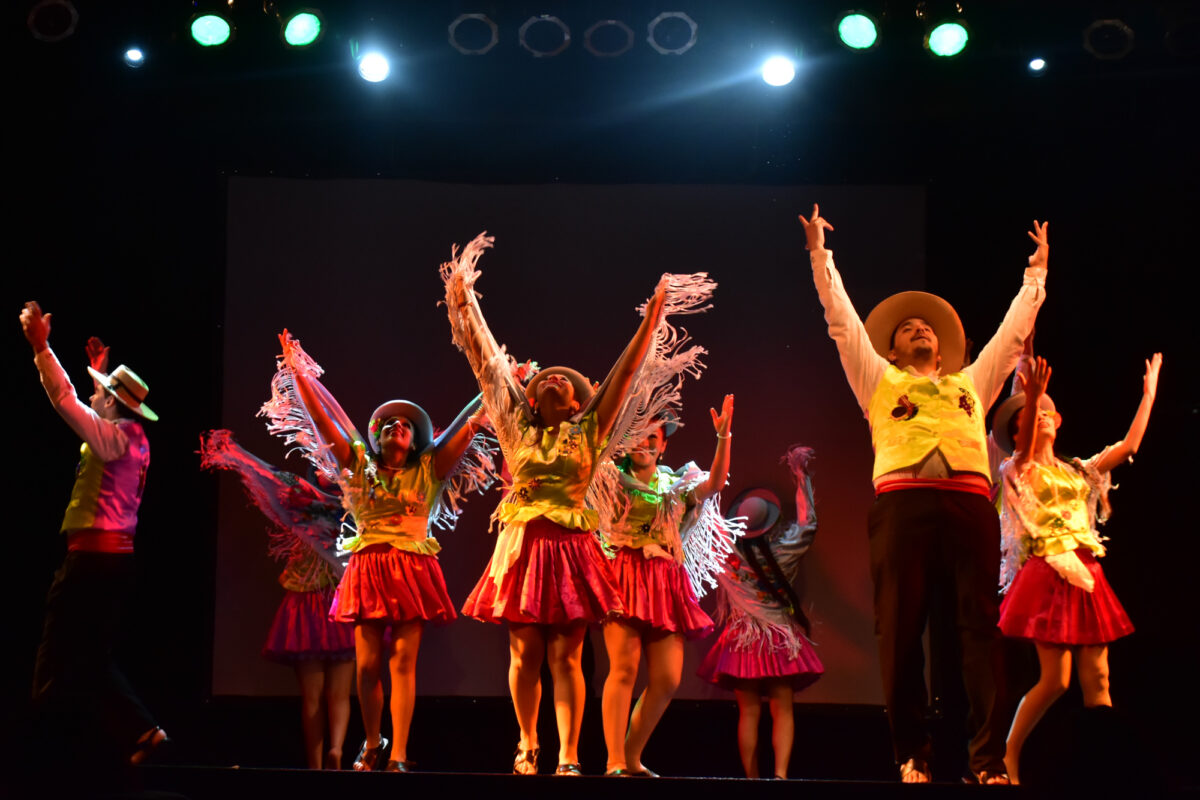
To strip away everything and be together
We’ve been changing what we do; we received thousands of criticisms, which was somewhat bitter. For example, now we dance without traditional costumes. We decided to do this for several reasons. First, it was almost a coincidence. When we learned that the Amazon had been set on fire and that here, the dancers had many problems with their leaders, we found ourselves lacking the motivation to wear the costumes. Then, we had a very diverse group of dancers in terms of age, technical abilities, and expression in dance. Also, traditional costumes often conceal many things; people suffer from difficult situations. We have always been a bit like this: we dance, we have fun, we want to entertain you, but we also want to tell you that there is child exploitation, there is exploitation in this, there is that, and we still remember. So, my son and I sat down, looked at each other, and said, ‘No, it’s over. We’re not going to put on a folkloric show for anyone. We’re going to come out dressed in black – because that’s how we felt, angry and sad – and we’re going to use props and mix different rhythms, all together, recklessly.’ And that’s how the new performance emerged, which was a complete surprise. The best thing is to strip away everything and be together, whether you’re a star dancer or next to someone who can barely keep up with the beat. But we are here, and that’s Amerindia’s response to this urban environment.
Dance, music, and the present – Narrating our reality

There is a particular prejudice against groups like ours. We have always worked from the outside. If you think about it, a whole classical and contemporary movement only started to get closer to folkloric when contemporary dance veered towards punk. But there is a division between that type of dance and folkloric, and within folkloric, Andean dances are a bit further down the line; that’s a reality. That can be seen in competitions. Also, there is limited production of material related to the dances of our indigenous peoples. That’s what we try to do. I know it’s tough and requires a lot of study, but our region lacks a bit of that. Within folkloric, you have Andean folk, Andean folkloric, and then the dances of indigenous peoples at the very end. That’s what’s missing in dance.
My son Mayco and I are in this together; it’s like flesh and blood. I don’t know; that’s how I see it. Mayco dances with incredible emotion, and it’s that sense of freedom that he absorbed, the idea of showing oneself, affection, and love for everything that represents our identities. We are sometimes in sync; fortunately, we share different opinions on various matters, but we have a common goal. I’m more focused on social support, home, and activism issues. He’s more into the folkloric aspect, studying, thinking. But we are very much aligned in what we do. That’s why a seasoned woman and a young man brought about our recent change. Both of us felt the same way: it’s all over; we have to fight differently, and we have to present dance so that people look at us, listen to us, and understand us because these performances are a platform where we can express ourselves.. For example, with what happened in Bolivia during the Áñez interim government, we narrate it through dance; we dance and relate and convey our emotions. In recent times, ever since the interim government came into power, it’s been a continuous narrative: ‘Bolivia is going through this.’ We are in a good place because he does what he wants, and I do. Both aspects came together. So, I take the stage, and we narrate the dance, expressing that we don’t want this for our country, we don’t want this for Bolivia, we don’t want this for the continent, and we infuse that emotion.
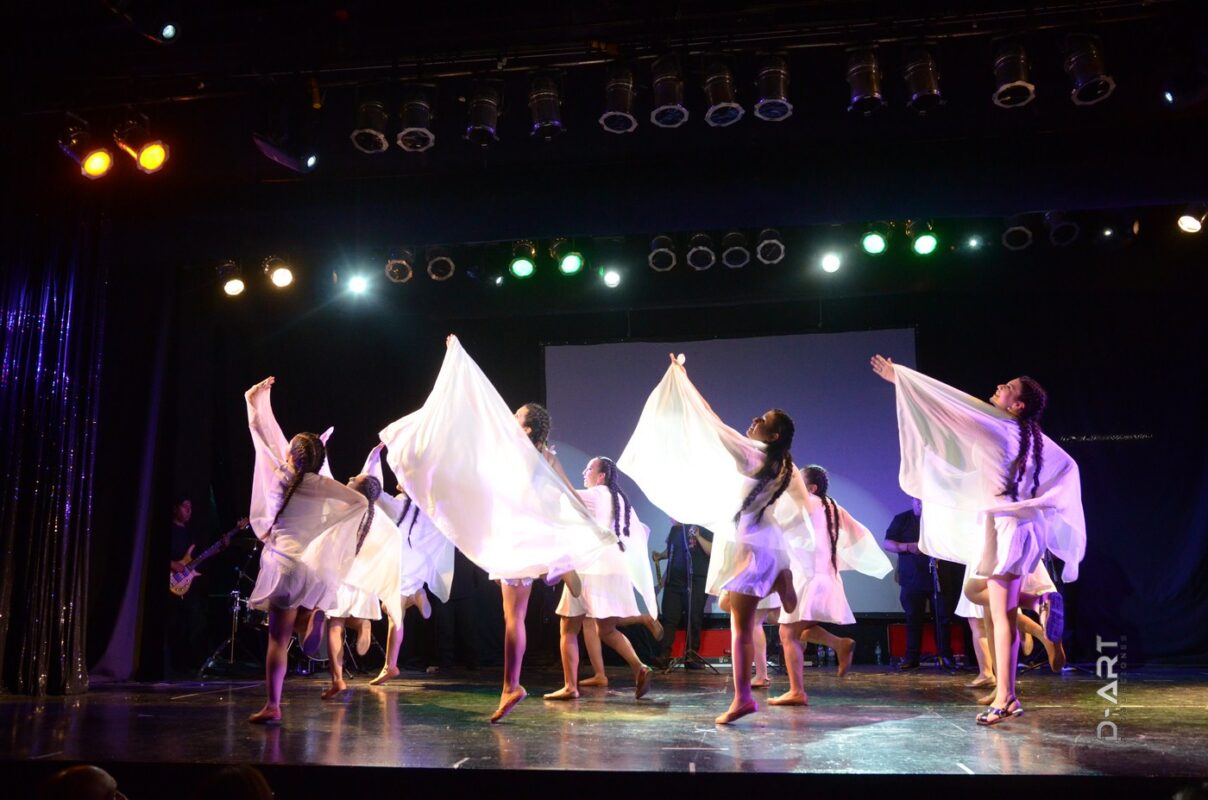
Not long ago, we inaugurated Tecnópolis, and I took the stage, and people weren’t applauding. It’s because we raised issues; the audience watched the dance, listened to the rhythm, and heard what was happening in Bolivia; they looked at the rhythm and listened to what was happening in Argentina. So, a different creation emerged, where suddenly there’s a bit of acting, narrating things, dance, music, and current events. Because if there’s one thing we lack, it’s bringing it all together to send a message so it doesn’t just stay as ‘Oh, the pre-Columbians,’ ‘How beautiful,’ ‘Let’s all be pure,’ ‘Let’s all be healthy,’ ‘Let’s all be this way.’ Those aren’t our realities; our face is this, and it’s all we have. Someone has to narrate it; folklorists do that, contemporary dancers do that, and classical dancers do it in their own way. We are happy because I believe we achieved the desired ensemble in Amerindia.
It may seem unbelievable, but sometimes one person’s support, another person’s companionship, can make someone else feel better. I realize this as time passes; people call and say, ‘I discovered something here,’ or ‘Thanks to this, I could do something else.’ We humans often don’t realize the impact we have on others. So, what you do, what you communicate, what we do, welcoming someone who is feeling down, lifting their spirits, their self-esteem, that’s what we are here for, for sure.